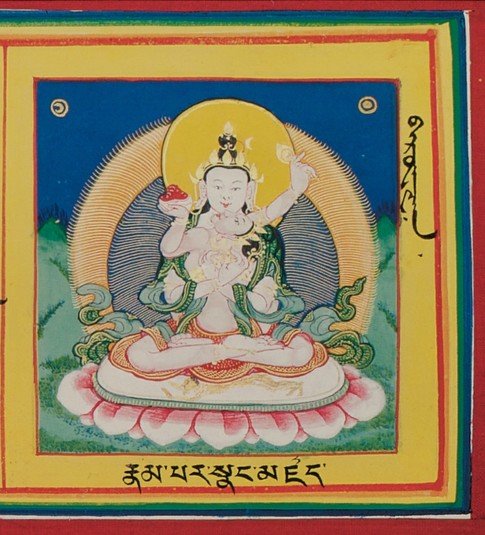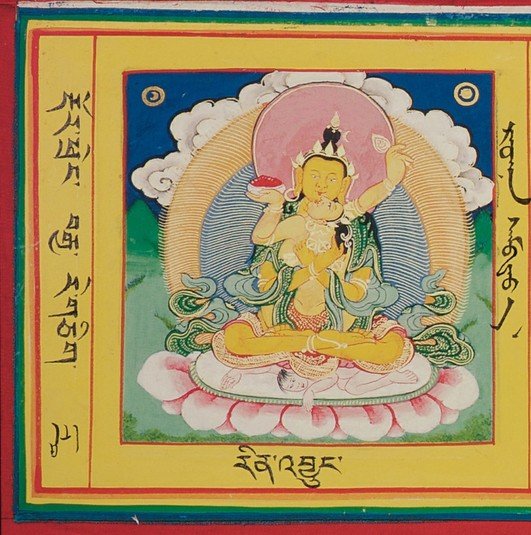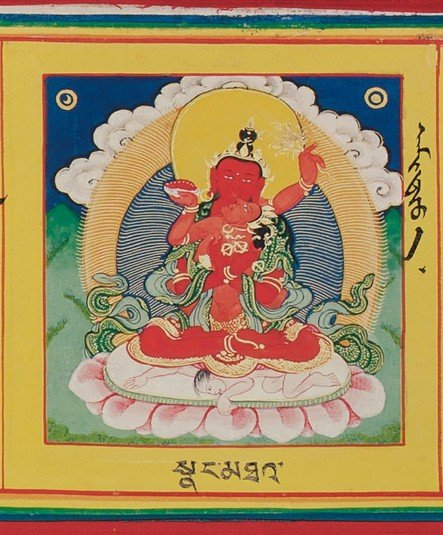Responding to Violence with the Wisdom of the 5 Buddha Families
In the past 10 days, more than 30 people were killed in 3 mass shooting incidents in New York, California, and Texas, and there were, no doubt, additional violent deaths during that time as well. It is hard to find the words to fully express the heartbreak, the outrage, the frustration that these and the many similar ongoing horrific tragedies give rise to. There is much work to be done individually and collectively in uprooting this level of violence and hatred. It is imperative that we find avenues of action rather than giving way to apathy and complacency.
Five Buddha Families
Buddhist practice involves much solitary practice which may seemingly appear to be inaction, but in our study, contemplation, and meditation we are gaining understanding of our mind, our nature, and reality which then allows us to navigate our conventional reality with wisdom and compassion. The buddhadharma’s perspective on the law of karma/action and result, the interdependent nature of all, buddha nature, the simultaneity of relative and ultimate truths and more provide a view and context that allow us to function in the world skillfully and efficiently as our actions are then guided by the wisdom of the ultimate truth. One of these means is the teaching of the 5 Buddha Families which shows us that wisdom lies at the heart of our disturbing emotions and provides a map for understanding how we can move from overwhelm to engaging in a way that can efficiently affect change or transformation. We can use this method as we find a way to do our part to uproot violence and hatred.
Many of us have been feeling deep sadness and grief in light of the recent mass shooting, and we can take note that this is compassion naturally arising. In this moment, our innate compassion is manifesting as our hearts resonate with and feel the deep sorrow and grief of others and we wish for them to be free of that suffering and that no other being experience that pain. Having all been through a pandemic together, we can better understand how connected and interdependent we are and how it is that we share grief. Your pain is my pain. My sadness is your sadness. My love is your love. Your compassion is my compassion. We can come to directly experience that, in actuality, there is no “my” or “your.”
Vairochana Buddha
BUDDHA FAMILY
Beginning to experience this dissolution of the fabricated boundaries that divide our experience into self and other is the essential key to unlocking the wisdom that can be found in our overwhelm or feeling that the issue of senseless and brutal gun violence is impenetrable.
When we loosen the contraction of segregating our experience into self and other, subject and object, the boundless space that lies beyond the boundaries of self and other emerges. This space can effortlessly accommodate the enormity of our grief, the anger and frustration about gun violence, Congress’s willful inaction regarding gun regulation, the outrage at the perniciousness of white supremacy, and more.
This is the wisdom of the Buddha Family, the wisdom of all-encompassing space.
VAJRA FAMILY
Akshobhya Buddha
When abiding in this spaciousness there is limitless capacity to tolerate all that arises. This allows us to not react or act out of the anger or outrage that arises. When we are not in reactivity, this makes it possible to loosen the intense fixation on us versus them and to feel more deeply into the energy of the anger and outrage. This is where mirror-like wisdom begins to reveal itself. When we let go of fixation on the story of the anger, we can see clearly and precisely the issue at hand. We can clearly see the layers of complexity. Just as an object is perfectly and precisely reflected in a mirror that is stainless and without imperfections, the mirror-like wisdom of the Vajra Family gives us the capacity to clearly see all the factors that come into play in this issue of gun violence and its causes.
The water element is another component of the Vajra Family. When purified and experienced at an essential level, the water element provides ease and flow in navigating these issues. With water in balance, the natural ability to cohere disparate factions arises. We are easily able to find common ground between those with very different opinions.
Ratnasambhava Buddha
RATNA FAMILY
Seeing all the various layers of an issue precisely and clearly brings a groundedness. A natural sense of confidence emerges, as opposed to pride, arrogance, or the need to inflate oneself because of insecurity. This groundedness and the clarity of mirror-like wisdom allows us to recognize that people of all racial backgrounds and political beliefs have buddha nature. There is a recognition of the natural equality of self and other in that they are equally self-less. There is no distinction between yours and others’ well-being.
This is the Ratna Family’s wisdom of equality. The other component of the Ratna Family is the earth element. When experienced on the essential level, the earth element provides a sense of expansiveness, abundance, steadfastness, and patience, all of which are supportive as we work to affect change which can be glacial at times.
PADMA FAMILY
The wisdom of equality helps to relax intense fixation and passion on our opinion. As we let go of this fixation, the energy that has been imprisoned in it begins to radiate. In this case, it is inquisitive energy. This is the energy of the wisdom of discernment. It is curious about appearances that were precisely reflected by mirror-like wisdom, yet without the wish to grasp at them or push them away. When it manifests, we can clearly discern the unique qualities, beliefs, and characteristics of all factors and people involved in these issues of gun violence and hatred without reactivity.
This discernment along with the wisdom of equality and the essential experience of the fire element that is associated with the Padma Family allows for warmth, compassion, and creativity in finding solutions to arise along with the capacity to transform.
Amitabha Buddha
Amognasiddhi Buddha
KARMA FAMILY
With compassion, creativity, and the capacity to transform activated, and with the capacity to discern the unique characteristics and qualities of all appearances, the Karma Family’s all-accomplishing wisdom knows precisely what action needs to be taken, it knows the succession of steps that will best move things along to resolution, and it does this instantly with the utmost efficiency. Having loosened the fixation on self and other and given rise to the other wisdoms, this capacity for limitless, efficient action can fully arise. And with the wind element purified and in balance, we have access to its essential capacity for ease with change, and effortless, quick transformation.
This path of recognizing the essential wisdom of the experience of our emotions and the elements is always available. We do not need to go on pilgrimage, receive an empowerment, or go into retreat. We simply start where we are. We start with noticing the emotion that is arising and use it as an avenue to loosen the perspective of self and other. Let go of the story and feel into the energy, the essence of what is arising, and the journey has begun.
While the 5 Buddha Families provides a map for moving from dualistic fixation to wisdom and efficient and effective action, the path requires perseverance and dedication. The perfect model of that perseverance is Kagyu Lineage master, Milarepa. It is remarkable to think that before he entered the path of dharma, Milarepa perpetrated a massacre that killed 35 people at the request of his mother. Today, the weight of that act lands with even more gravity. In his utter remorse for that horrific action, he completely dedicated himself to the path of dharma. His inconceivable perseverance and dedication in his path of transformation and the realization he achieved are deeply inspiring. We have been exploring his life and songs of realization in the Sukhasiddhi Sunday series and in the upcoming June residential retreat, we will continue this deep dive into his life as well as learn the Milarepa practice which is a guru yoga practice that simultaneously enhances Mahamudra practice. You are invited to join us as we come together in-person as a sangha for the first time since the beginning of the pandemic. There is no greater support than sangha as we all persevere in our meditation practice both on and off the cushion.






